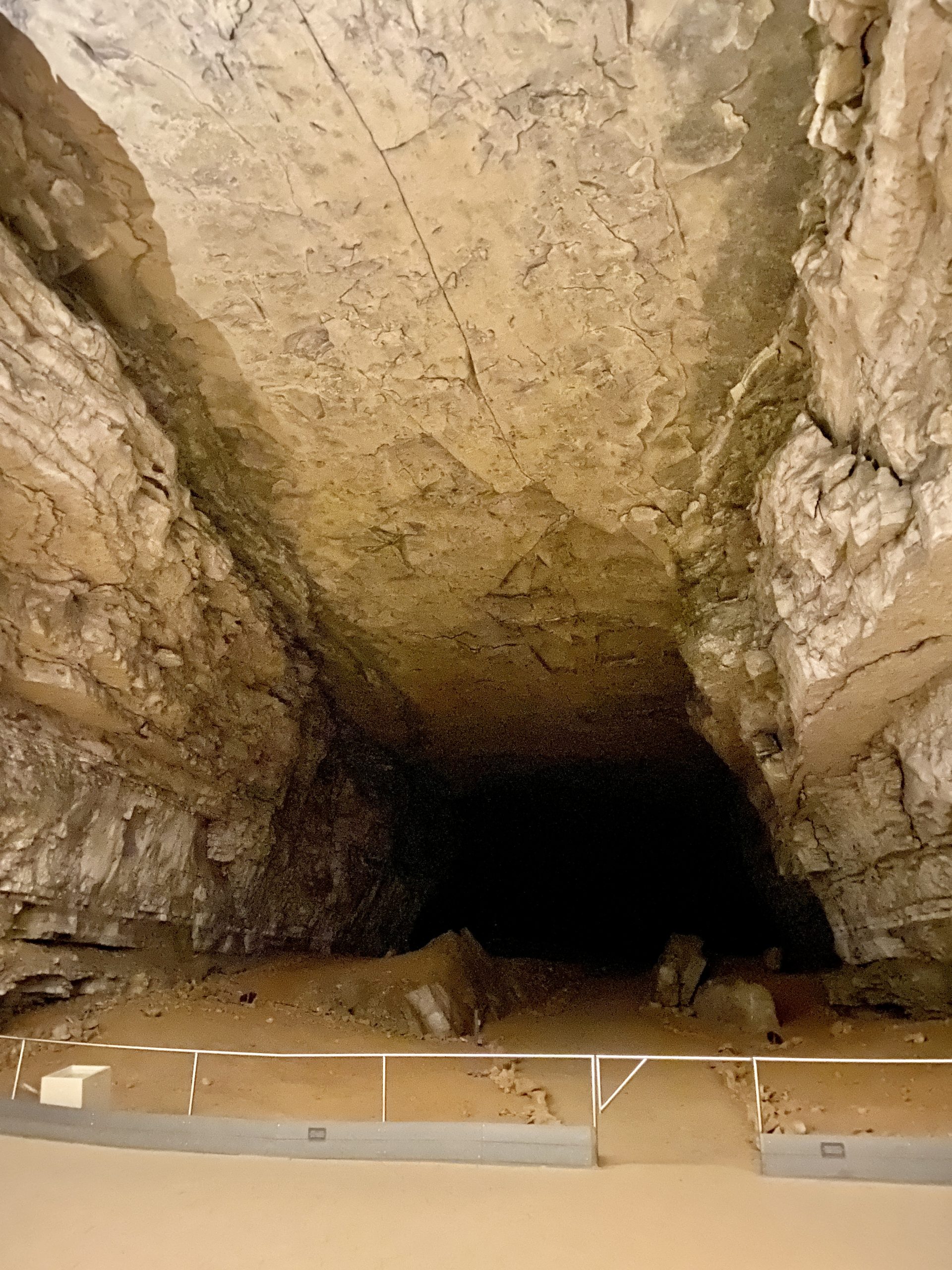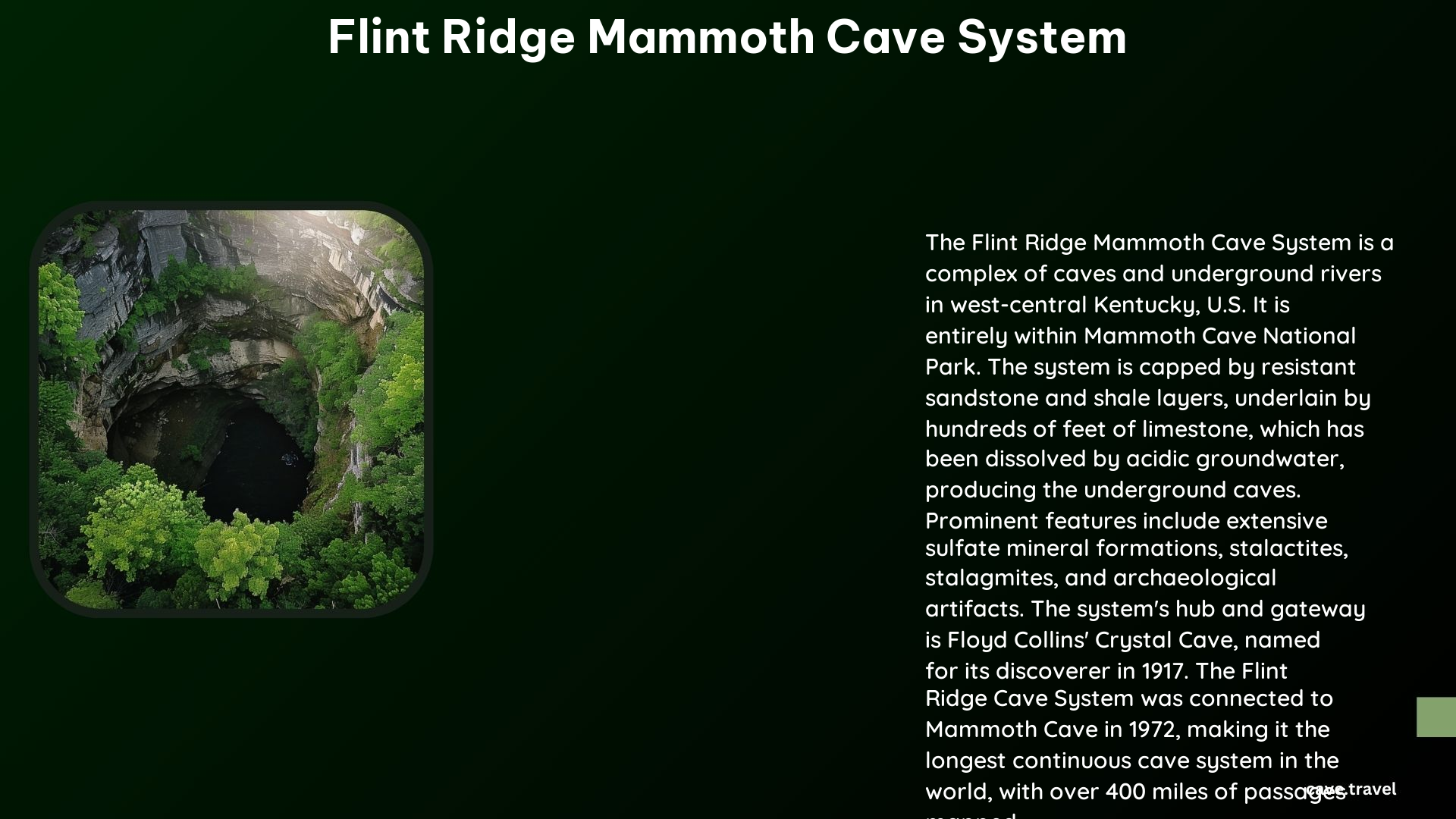The Flint Ridge Mammoth Cave System is a vast and captivating underground network located within Mammoth Cave National Park in west-central Kentucky, United States. This complex system of caves and underground rivers is renowned for its extensive sulfate mineral formations, stalactites, stalagmites, and archaeological artifacts, making it a true wonder of nature.
History of Exploration

The Flint Ridge Cave System has a rich history of exploration, dating back thousands of years. Prehistoric American Indians were the first to venture into the cave around 5,000 years ago, leaving behind a wealth of archaeological evidence. In the modern era, the cave’s exploration has been spearheaded by dedicated individuals and organizations, such as Stephen Bishop, an enslaved Mammoth Cave guide who extended the known length of the cave in the 1840s, and the Cave Research Foundation (CRF), which has been mapping and exploring the caves since the late 1950s.
Connection to Mammoth Cave

One of the most significant events in the history of the Flint Ridge Cave System was its connection to the Mammoth Cave System on September 9, 1972. This connection, discovered by a CRF team led by John Wilcox, made the combined system the longest known cave system in the world. The team followed the Hanson’s Lost River downstream to discover its connection with Echo River in Cascade Hall of Mammoth Cave.
Current Status
As of 2023, the Mammoth Cave System, including the Flint Ridge Cave System, has been mapped and explored to a length of 426 miles (686 km). The Cave Research Foundation continues to explore and map new sections of the cave, with the most recent addition of six miles announced during the park’s 50th Anniversary celebration of the Flint Ridge-Mammoth Cave connection.
Visiting the Caves
Visitors to Mammoth Cave National Park can explore the Flint Ridge Mammoth Cave System through guided tours, which are available at various times throughout the day. The park also offers special evening programs where members of the CRF are available to discuss their efforts to survey and discover more parts of the Mammoth Cave.
Unique Features of the Flint Ridge Mammoth Cave System
The Flint Ridge Mammoth Cave System is known for its diverse and captivating geological features, including:
- Sulfate Mineral Formations: The caves are home to extensive sulfate mineral formations, including gypsum, which create stunning and intricate displays.
- Stalactites and Stalagmites: The caves are adorned with a variety of stalactites and stalagmites, formed by the slow dripping of mineral-rich water over thousands of years.
- Archaeological Artifacts: The caves have yielded a wealth of archaeological artifacts, providing insights into the lives of the prehistoric American Indians who once explored the system.
- Underground Rivers: The Flint Ridge Mammoth Cave System is home to a network of underground rivers, including the Hanson’s Lost River and the Echo River, which have played a crucial role in the formation and exploration of the caves.
Conclusion
The Flint Ridge Mammoth Cave System is a true natural wonder, offering visitors a glimpse into the incredible power of water and time to shape the Earth’s underground landscapes. Whether you’re a seasoned cave explorer or a curious adventurer, the Flint Ridge Mammoth Cave System is a must-visit destination that will leave you in awe of the beauty and complexity of the natural world.
References:
- https://www.nps.gov/maca/learn/news/50th-anniversary-of-mammoth-cave-and-flint-ridge-connection.htm
- https://www.nps.gov/articles/000/exploring-the-worlds-longest-known-cave.htm
- https://www.nps.gov/maca/learn/news/mammoth-cave-just-got-a-little-more-mammoth.htm
- https://www.britannica.com/place/Flint-Ridge-Cave-System
- https://en.wikipedia.org/wiki/Mammoth_Cave_National_Park
